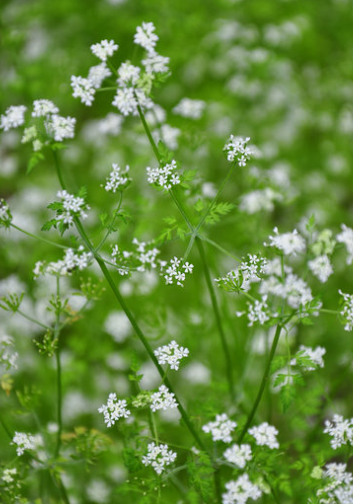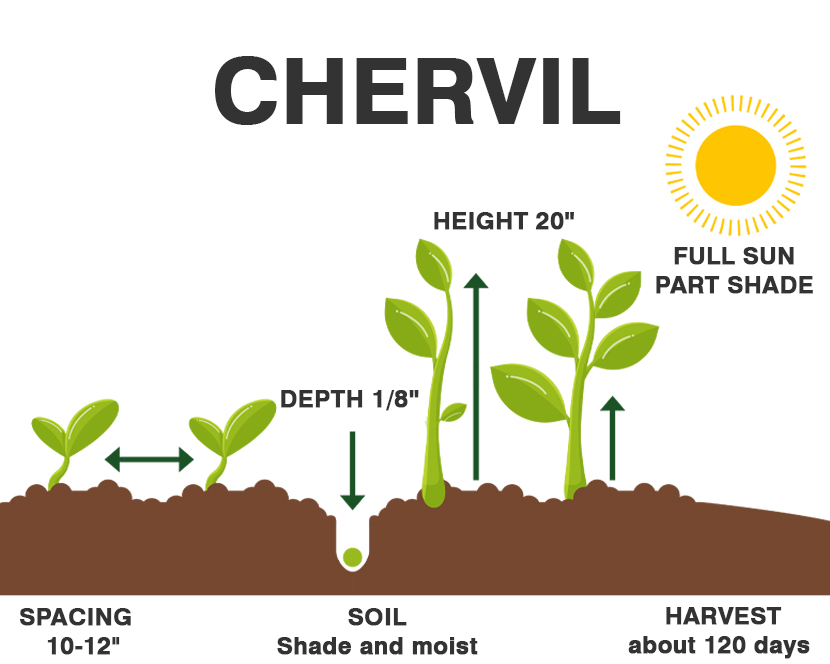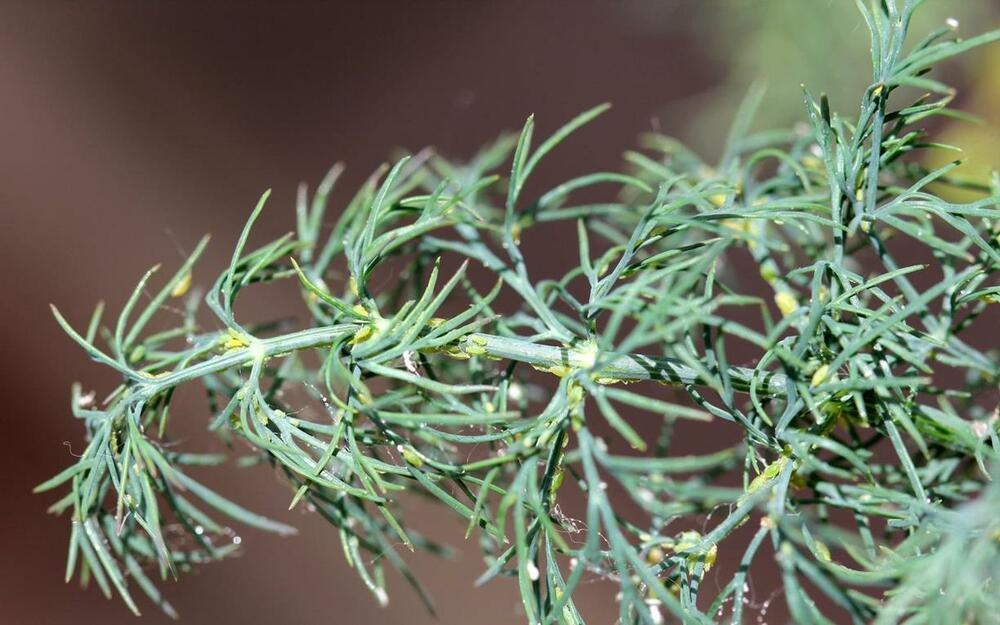Chervil is a delicate culinary herb used frequently in French cuisine. It is a member of the parsley family with a mild flavor. This spring herb is often used in egg dishes. It is sometimes called French parsley.

| Common Name | Chervil |
| Botanical Name | Anthriscus sylvestris |
| Family | Apiaceae (Carrot) |
| Plant Type | Annual, Biennial, herb |
| Size | 12–14 in. tall, 6–12 in. wide |
| Sun Exposure | Partial |
| Soil Type | Loamy, moist, well-drained |
| Soil pH | Acidic, neutral |
| Bloom Time | Summer |
| Hardiness Zones | 3–11, USA (depends on species) |
| Native Area | Black Sea and Caspian Sea and to western Asia. |
| Toxicity | Toxic to animals |

When to Plant?
This will be determined by your planting zone. There is a final frost date for each area. As a result, you can plan your gardening activities around this date. Check our Frost Dates Across North America: First & Last Frost Dates Chart. However, the date will not be the same for every plant.
How to Plant
Chervil is considered a cool-season crop, thanks to its preference for light shade and moist soil, but it can be grown and harvested from early spring through late summer depending on your location. If you live in a frost-free zone, chervil can even be planted in early to late fall.
Chervil has a tendency to bolt quickly in warm weather conditions, sending up white flowers (umbels) that turn into seed heads and dull the flavor of the remaining leaves, so avoid sites with full sun to extend their lifespan. Instead, choose a planting site with partial shade for your chervil plant to grow in.

Chervil prefers a damp, fertile soil pH between 6.5 and 7.0. To prepare the soil for planting, incorporate a good amount of organic matter like compost to boost the nutrients, and mix in peat, or bits of coconut coir, to assist with water retention.
To start chervil indoors, sow seeds up to two months before the final frost date in peat pots filled with a seed-starting mix from a garden center or nursery. Keep moist and warm, and place on a sunny windowsill or under a grow light as soon as seedlings emerge. Harden off young plants before planting in the ground to prevent transplant shock. Chervil seeds, or seedlings, can be sown directly in the ground around two weeks before the final frost date so that the plant can take full advantage of the cool weather of early spring. Plant seeds ⅛ inch below the surface of the soil; once the seedlings reach two inches tall, thin to create 10 inches of space between each seedling, so they have room to grow.
A delicate parsley-like plant with a hint of licorice aroma, its delicate flavor disappears in cooking, so add it just prior to serving or add raw leaves fresh to salads. If allowed to flower and go to seed, it may self sow. This is an underrated herb and remains a stranger to many North American gardeners. Companions – lettuce, and radishes, but does best in part shade. Try growing some between rows of tall cabbages and kale. Chervil helps to repel slugs.
How to Cultivate
Soil – It prefers moist, well-drained soil but can grow in clay.
Sun – Full sun to part shade
Spacing – 10 – 12″
Water – Moist to dry (it’s adaptable)
Let the soil dry out completely before watering.
Fertilizer – This plant has no special fertilizing needs
How to Harvest
Chervil plants are ready to harvest around 8–10 weeks after planting. To harvest chervil, pick as needed once the plants have reached a few inches tall, harvesting first from the outside of the plant, to allow the new growth at the center to flourish.
Use fresh chervil as a garnish for fish, vegetables, and egg dishes like omelets, or as a seasoning in a rich, velvety butter sauce.
Hydroponics
Germination: Soak the chervil seeds in water for about 24 hours to help with the germination process. After soaking, transfer the seeds to a germination medium such as a seedling tray or rockwool cube. Keep the germination medium moist, but not overly wet. Place the tray or cube in a warm, well-lit location. Once the seedlings have grown to a sufficient size, transfer them to the hydroponic system.
pH range: Chervil thrives in a pH range of 6.0 to 7.0. It is important to monitor the pH level of the nutrient solution regularly and adjust it as needed to ensure healthy growth.
EC: The ideal electrical conductivity (EC) level for chervil is between 1.2 and 2.0 mS/cm. This can be measured using a handheld EC meter and adjusted as needed.
PPM: The parts per million (PPM) range for growing chervil is between 700 and 1400. This can be measured using a TDS/PPM meter and adjusted as needed.
Humidity: Chervil prefers a humidity level between 50% and 70%. Humidity can be maintained by using a humidifier or dehumidifier, depending on the ambient humidity level in the growing area.
Light hours: Chervil requires around 14-16 hours of light per day for optimal growth. Supplemental grow lights may be required if natural light is insufficient.
Temperature air: The ideal air temperature range for growing chervil is between 60°F and 70°F (15°C to 21°C). Temperatures above 75°F (24°C) can negatively affect the plant’s growth.
Temperature water: The ideal water temperature range for growing chervil hydroponically is between 60°F and 70°F (15°C to 21°C). It is essential to monitor the water temperature regularly and adjust it as needed to maintain optimal growing conditions.
Overall, growing chervil hydroponically can be a simple and rewarding process. By following these guidelines and monitoring the plant’s nutrient levels and environmental conditions, you can produce healthy and flavorful chervil plants.
Common Pests and Diseases
Willow-carrot aphid (Cavariella aegopodii)

Symptoms: Small soft bodied insects on underside of leaves and/or stems of plant; usually green or yellow in color; if aphid infestation is heavy it may cause leaves to yellow and/or distorted, necrotic spots on leaves and/or stunted shoots; aphids secrete a sticky, sugary substance called honeydew which encourages the growth of sooty mold on the plants
Cause: Insect
Management
If aphid population is limited to just a few leaves or shoots then the infestation can be pruned out to provide control; check transplants for aphids before planting; use tolerant varieties if available; reflective mulches such as silver colored plastic can deter aphids from feeding on plants; sturdy plants can be sprayed with a strong jet of water to knock aphids from leaves; insecticides are generally only required to treat aphids if the infestation is very high – plants generally tolerate low and medium level infestation; insecticidal soaps or oils such as neem or canola oil are usually the best method of control; always check the labels of the products for specific usage guidelines prior to use



